When Victorian British explorers and adventurers first went to Africa, they encountered large animals with which they were not well acquainted.
When it came to shooting them, they had to improvise and discuss with their gunmakers what types of weapon might serve best to dispatch elephants, rhinos, Cape buffalo and lions. Geting it wrong and not killing these dangerous animals had consequences, so it is not surprising that the instincts of most of those involved leaned towards size. Hit a big animal with a big projectile and it is more likely to die fast, went the thinking.
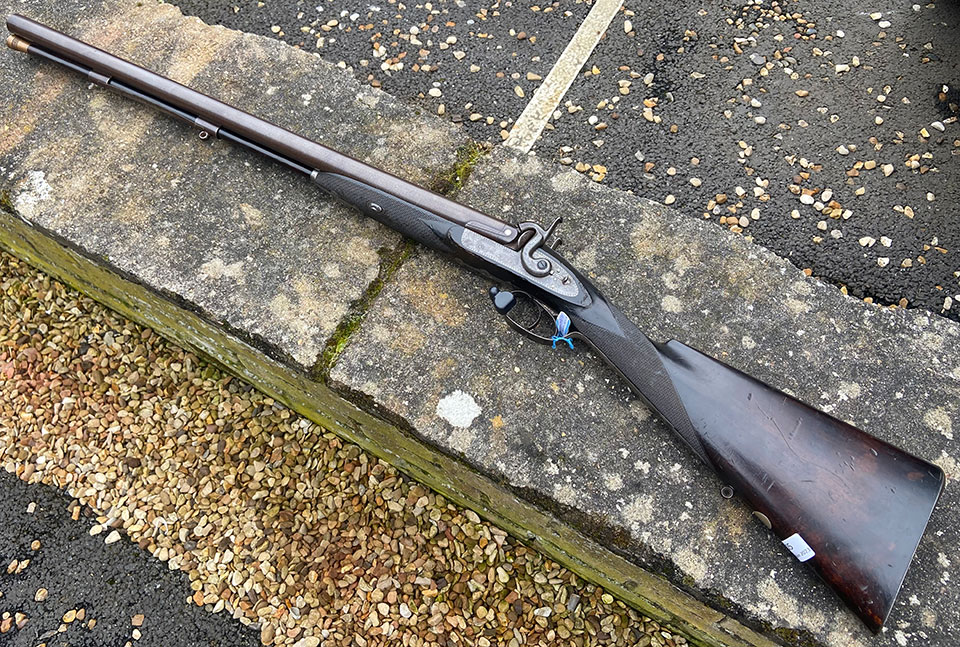
This double 8-bore by London gunmaker John Blissett was made around 1850 and, despite the fact that it is smooth bored, it was the precursor to modern .577 double rifles. It has 28" damascus twist barrels and it is, of course, a muzzle-loader.
The big, bar-action locks have bolted hammers to prevent negligent discharge and, though it is plainly finished, it is of very fine quality. The action filing, the fit of metal parts and that of wood to metal is first class.
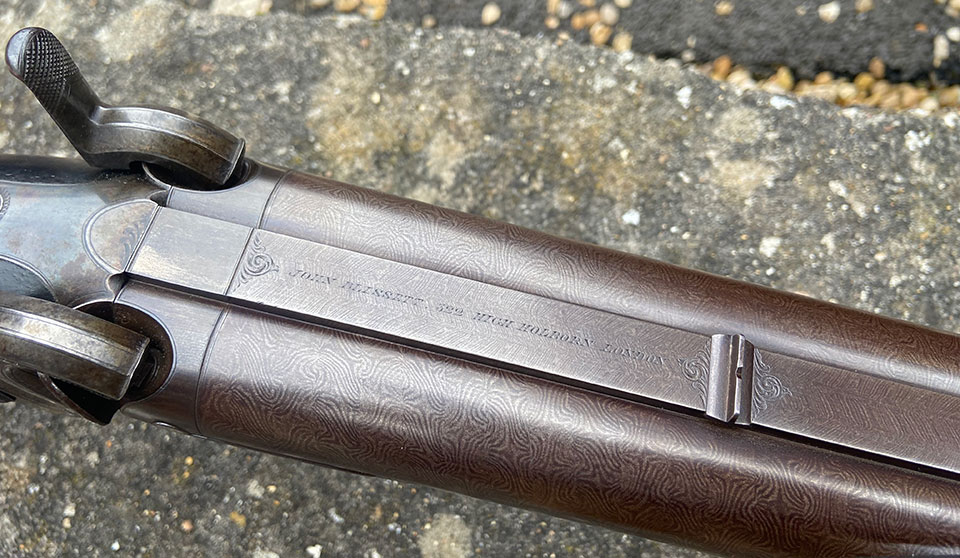
Despite its age, the woodwork , though darkened, is sound and perfectly proportioned. The damage it has sustained is difficult to identify, or at least its origin is. The edges of the wood under the bar and around the lockplates appears to have been chipped away or gauged. One observer wondered if it had been knawed by rodents. I don't think that is the reason but it is descriptive of the damage visually.
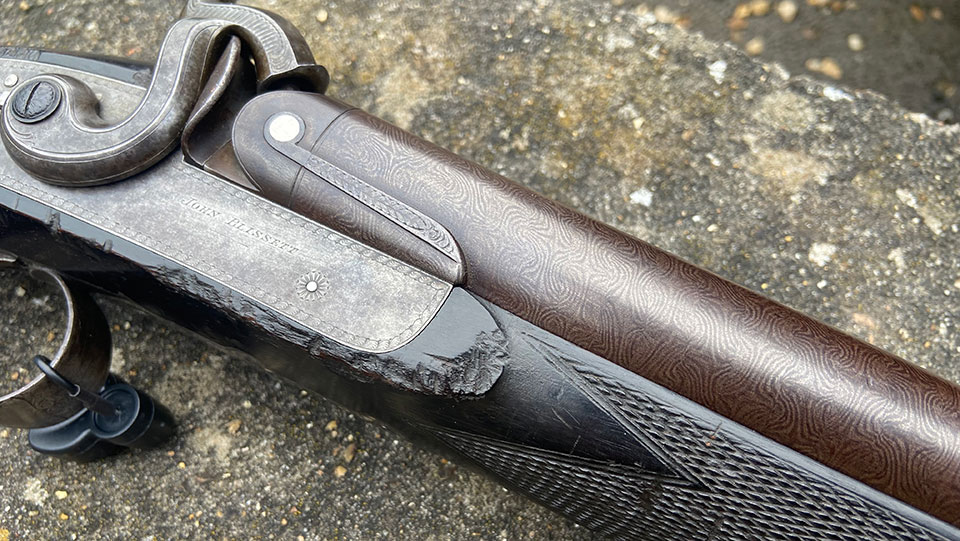
John Blissett was in business at 322 High Holbourn, London in 1850 and remained there until 1866. All the guns I have seen by Blissett have been of very high quality.
Muzzle-loading a rifle in a hurry, particularly a large bore rifle, is hard. These dangerous animals were also usually engaged at short range. Sir Samuel White Baker recounted his practice of riding his horse towards an elephant or a rhino, discharging his gun at a range of a few yards, then riding off to re-load. He would return as often as necessary until the animal succumbed to its wounds.
An 8-bore ball of lead weighs one eighth of a pound and, propelled by a hefty charge of black powder, it would deliver severe recoil to the user as well as smashing flesh and bone at the other end.
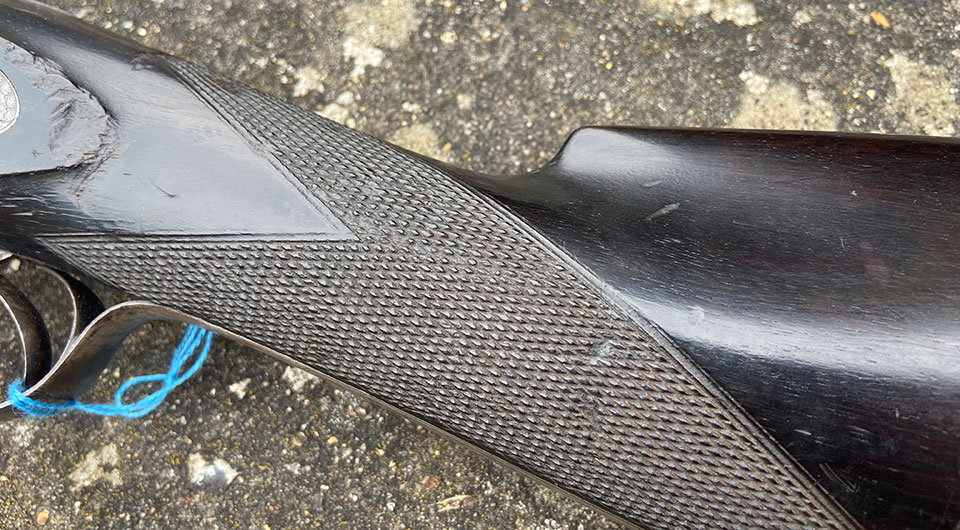
Despite its exterior blemishes, the wood and metalwork of thei muzzle-loader remain in very good order and it is shootable. A bit of research should discover a load for it that will be adequate, though these days taking it in search of African dangerous game is probably not likely. In theory it should be legal, as many contries simply specify a minimum calibre for each species. 8-bore is more then big enough to satisfy if size is the sole criterion.
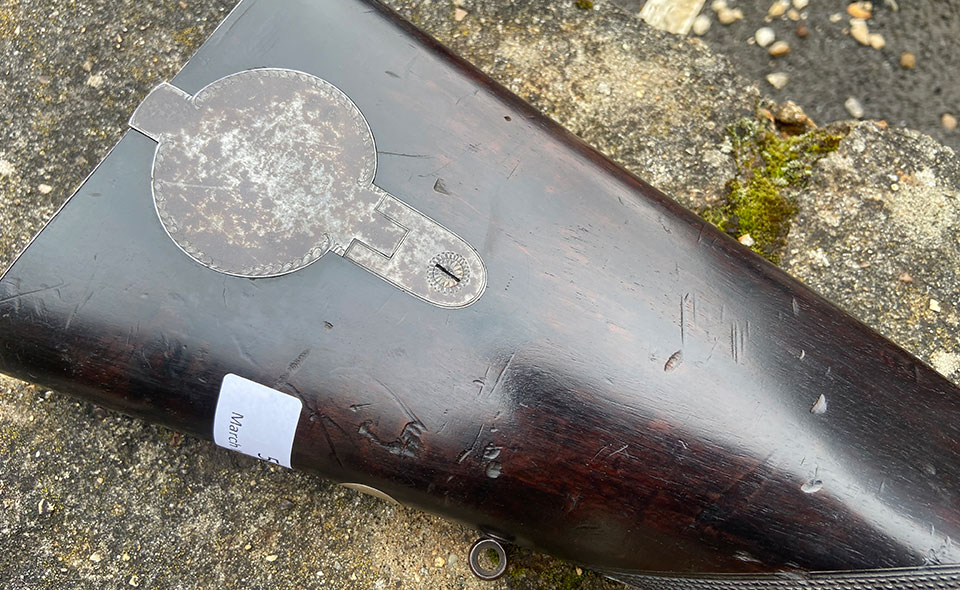
A typical load would be an 860-grain ball with 10 grains of black powder behind it, which should achieve 1,650 fps. I think this rifle could take it. The stock is chunky and appears sound and the barrel walls are massively thick. It remains a relic from a bygone age but there are people out there who would be only too willing to cook up a load and test it, then go and find something to hunt.
Unfortunately, here in the UK, that is just not possible anymore.
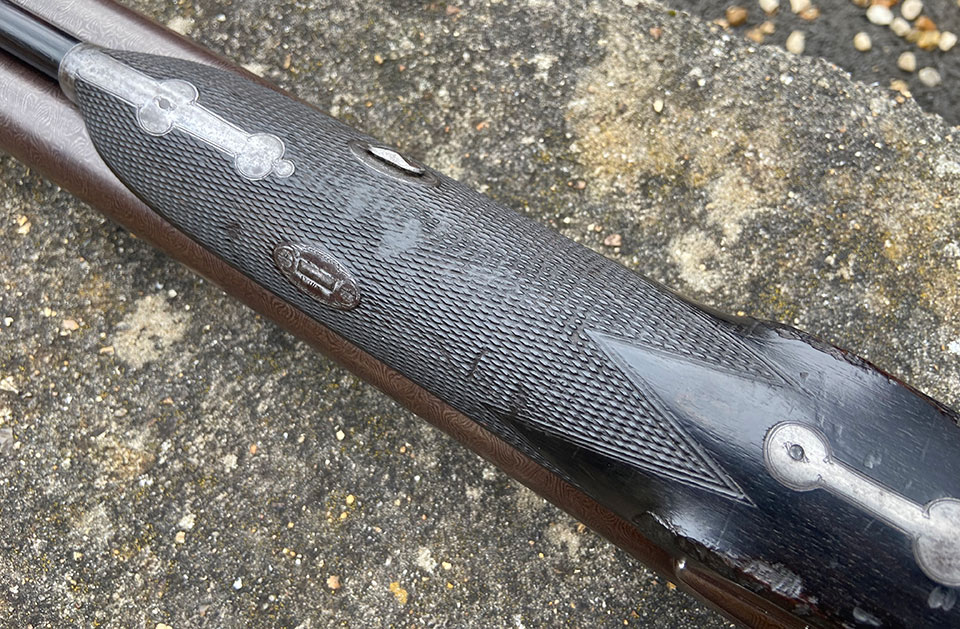
Published by Vintage Guns Ltd on




